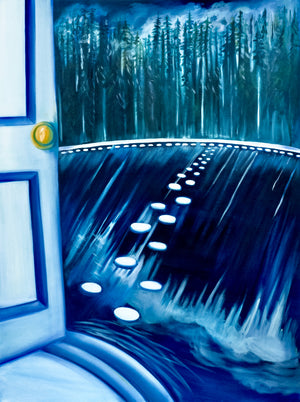Writing with Quill Pens
Quill pens have a long and storied history as writing instruments, dating back to ancient times. They were commonly used for writing and calligraphy before the invention of modern pens and pencils. Here is an overview of quill pens and their significance:
-
Construction: Quill pens are made from the large flight feathers of birds, most commonly the primary feathers of geese, swans, or crows. Feathers from the left wing were preferred for right-handed writers, as they naturally curved away from the writer's hand. The tip of the feather, known as the nib, was carefully cut and shaped to create a writing point.
-
Writing Technique: Using a quill pen requires dipping the nib into ink periodically as the ink is depleted. The flow of ink onto the nib is regulated by the split nib structure, which helps control the release of ink onto the writing surface. Writers had to hold the pen at the correct angle and apply varying pressure to achieve different line thicknesses and calligraphic styles.
-
Historical Significance: Quill pens were widely used throughout history, from ancient civilizations like the Egyptians and Greeks to the medieval period and the Renaissance. They played a vital role in the production of important documents, manuscripts, and works of art. Notable figures such as Shakespeare, Leonardo da Vinci, and Thomas Jefferson were known to have used quill pens.
-
Calligraphy and Art: Quill pens were particularly favored by calligraphers and artists for their versatility and ability to produce fine lines and intricate details. The flexibility and responsiveness of the feather nib allowed for a wide range of expressive strokes and flourishes in calligraphy and illuminated manuscripts.
-
Decline and Modern Usage: The popularity of quill pens gradually declined with the invention of steel-nibbed pens in the 19th century, followed by fountain pens, ballpoint pens, and modern writing instruments. However, quill pens continue to be used today for calligraphy, historical reenactments, and artistic purposes by enthusiasts who appreciate the traditional craft and aesthetics of writing with a quill.
In summary, quill pens hold a significant place in the history of writing instruments and calligraphy. They offer a unique and artistic experience, allowing writers and calligraphers to connect with the heritage of the written word. While less common in everyday writing today, quill pens continue to captivate individuals interested in exploring the traditional methods and techniques of the written arts.




